If you’re planning a trip to Egypt you may be wondering where to start. Egypt travel can be overwhelmingly full of options, tips, considerations and places to visit.
 Trying to sum it all up in a blog article would be ridiculous. However, I’m here attempting to provide an answer to the question:
Trying to sum it all up in a blog article would be ridiculous. However, I’m here attempting to provide an answer to the question:
¿If I have limited time and money to go to Egypt, what are the main sites I should see so that I would get a sense of the ancient civilization that still marvels us today?
I started to provide a response in part one of this article going from south to north of Egypt with the first four sites.
Of course, this would be your starting point for choosing your attractions, but planning a trip to Egypt would require you to consider all the aspects of travel to a very foreign land.
But for now, let’s finish our tour!
Valley of the Kings
One of the most important archaeological and burial sites in the world, the Valley of the Kings is located near the modern city of Luxor.
During the Egyptian New Kingdom this was the place where all pharaohs and their nobility were buried in underground tombs of every possible size.

Vallery of the Kings. Photo: Wikipedia, Nikola Smolenski
Please copy and paste the following link to go to the original image:
http://upload.wikimedia.org/wikipedia/commons/b/b8/Valley_of_the_Kings_panorama.jpg
There are 65 tombs and some of them are open for the public to visit.
The site is particularly famous because in 1922 archaeologist Howard Carter discovered the untouched tomb of Tutankhamun with all its riches still inside.
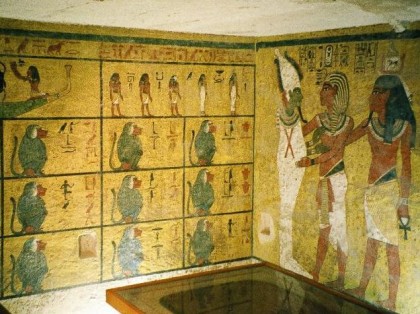
Valley of the Kings. Painted walls in the burial chamber KV62 (Tutankhamun’s tomb). Photo: Wikipedia, Hajor, Dec.2002.
Please copy and paste the following link to go to the original image:
http://en.wikipedia.org/wiki/File:Egypt.KV62.01.jpg
The tomb can be visited today, albeit its precious artifacts are on display at the Egyptian Museum of Antiquities in Cairo.
The Theban Mapping Project has a fantastic website that contain all the information about the tombs with 3D recreations, videos, maps, photos, it’s the best source online about this subject.
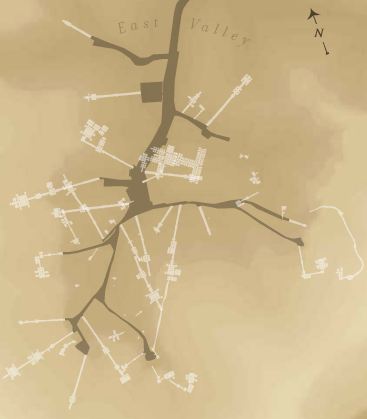
Valley of the Kings Layout. Source: Theban Mapping Project.
Mortuary Temple of Hatshepsut
Located in Deir el Bahari at the opposite bank of the Nile at Luxor, the Temple of Queen Hatshepsut is one of the most magnificent examples of exquisite Ancient Egyptian architecture.
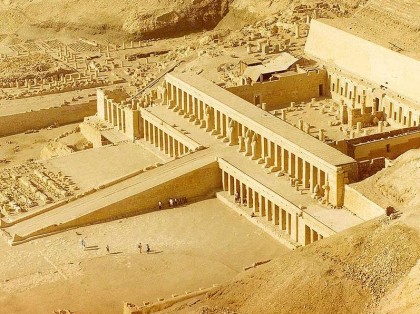
Photo: Wikipedia, Ian Lloyd.
Please copy and paste the following link to go to the original image:
http://en.wikipedia.org/wiki/File:Hatshetsup-temple-1by7.jpg
Its simplicity and elegant design preceded that of the Parthenon by a thousand years.
Built during her co-regency (between 1479 and 1458 BC) it was a statement of her divine descent at the same time as a house of worship for to the sun god Amon-Ra.
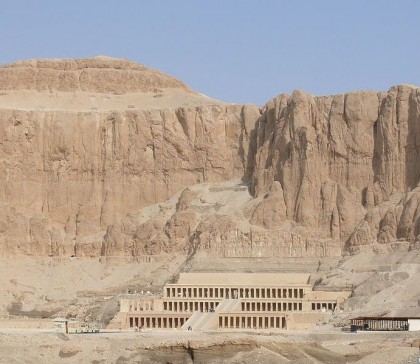
Photo: Wikipedia, Ad Meskens.
Please copy and paste the following link to go to the original image:
http://en.wikipedia.org/wiki/File:Mortuary_Temple_of_Hatshepsut_01.jpg
Queen Hatshepsut is famous for being one of the longest female rulers in ancient civilizations, a feat that in Egypt, was supposed to be limited to male pharaohs.
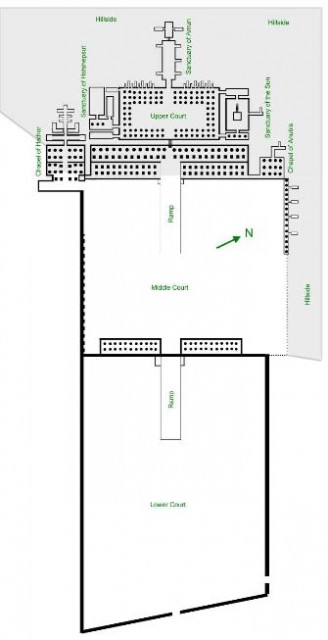
Temple of Hatshetsup floorplan. Source: www.charlesmiller.co.uk Please click to enlarge and go to the original floorplan website.
Temples of Karnak and Luxor
Both located in the modern city of Luxor (ancient Thebes) and connected by an avenue of sphinxes, which is now partially covered by modern buildings and streets.
The Temple of Karnak is a huge temple complex and his construction spanned from the Middle Kingdom (2055 BC) until the Ptolemaic period, each pharaoh adding to it.
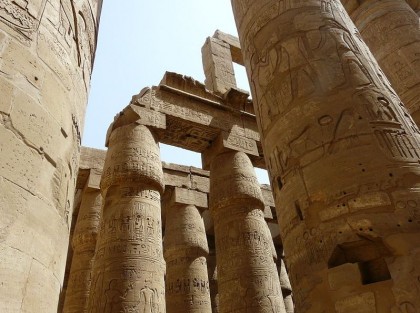
Temple of Karnak, Hypostyle Hall. Photo: Wikipedia, Kurohito.
Please copy and paste the following link to go to the original image:
http://en.wikipedia.org/wiki/File:Karnak-Hypostyle3.jpg
It’s most famous feature may be the Hypostyle Hall in the Precinct of Amon-Re with its magnificent columns. This hall dates from the 9th Egyptian Dynasty (ca. 1290-1224 BCE).
Though the complex consists of many other temples and buildings, people generally visit this area.
The Karnak temple complex is the largest temple complex in Egypt and it’s second most visited attraction.
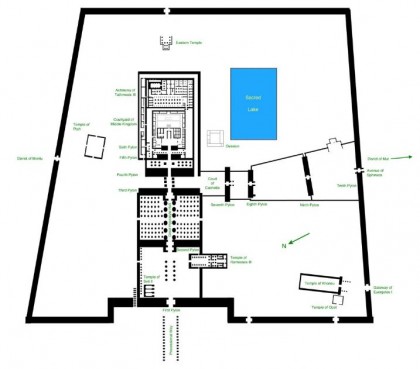
Temple of Karnak floorplan. Source: www.charlesmiller.co.uk
Please copy and paste the following link to go to the original image:
http://www.charlesmiller.co.uk/fla/images/templans/karnak.jpg
Luxor Temple on the other hand is smaller which is not to say that it’s small at all. The oldest parts of the temple are attributed to the reigns of Amenhotep III and Ramesses II.
Its most famous feature is the entrance pylon decorated with seated statues of Ramesses II and two glorious obelisks, one of which is located in Place de la Concorde in Paris, France.
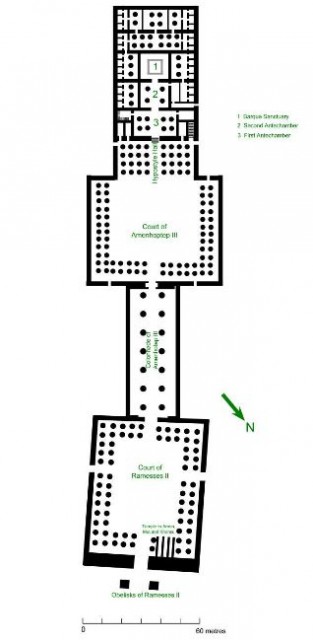
Luxor Temple floorplan. Source: www.charlesmiller.co.uk
Please copy and paste the following link to go to the original image:
http://www.charlesmiller.co.uk/fla/images/templans/luxorpln.jpg
Here’s a Google Earth view of the two temples in relation to each other: I’ve adapted to show Luxor Temple in magenta, the sphinx avenue in yellow and Karnak Temple Complex in acqua.
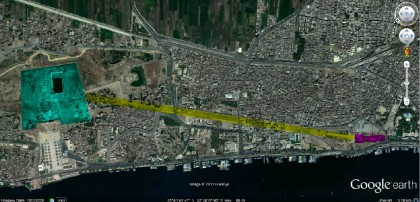
Karnak and Luxor Temples in relation to each other, Google Earth view.
And here’s a fantastic video that shows this in 3D:
The Giza Necropolis
30 minutes away from Cairo you can visit the most famous archaeological site and ancient religious monument of all, the motherload of historical sites: The Great Pyramids of Giza.
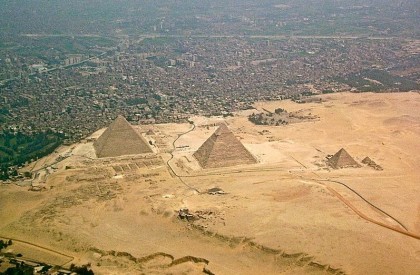
Photo: Wikipedia, Robster1983.
The complex includes the three main pyramids, the Great Sphinx and several cemeteries and other buildings.
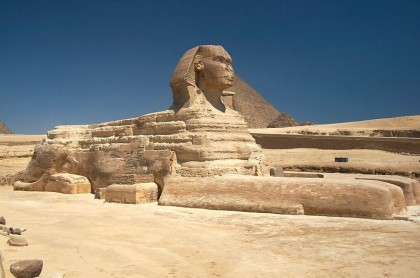
Photo: Wikipedia, Barcex.
Please copy and paste the following link to go to the original image:
http://en.wikipedia.org/wiki/File:Great_Sphinx_of_Giza_-_20080716a.jpg
The Great Pyramid took twenty years to be built and it was finished in 2560 BC. It was ancient even to ancient Egyptians!
Pretty soon pharaohs realized that building pyramids was like placing a giant neon sign on the tomb that read “plunder me”, so they turned to underground tombs instead.
The Egyptian Museum of Antiquities
The most important museum in the world dedicated to ancient Egyptian artifacts, houses incredible treasures like Exhibitions of artifacts from the tomb of Tutankhamun and the mummy of Ramses II.
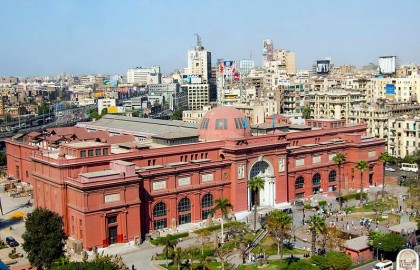
Egyptian Museum of Antiquities. Photo: Wikipedia, Bs0u10e01.
Please copy and paste the following link to go to the original image:
http://en.wikipedia.org/wiki/File:The_Egyptian_Museum.jpg
Of course, in the next few years the new Grand Egyptian Museum will be opened and it will then become one of the most visited sites in Egypt.
Egypt travel the bare essentials way
So there you have it, these are, in my opinion, your must-see can’t-miss historical sites in Egypt, which can be visited in about a week if you’re really organized.
Here’s a Google Map showing the position of all the sites in these two articles, so that you can get an idea of how far they are from one another:
What about you? Do you know of any other sites that should be included here?
Are any of these not that much impressive?
Share your comments in the field below or join us in Facebook!



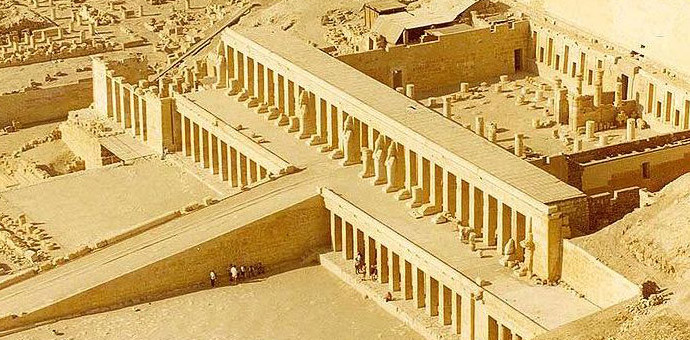
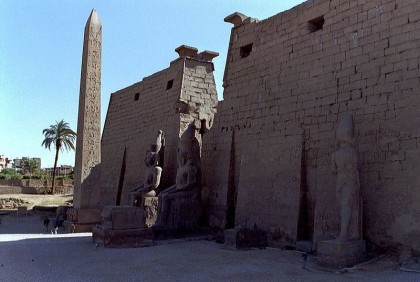
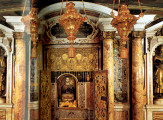

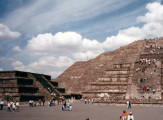




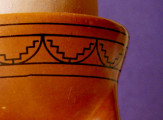
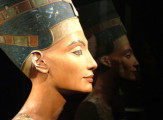
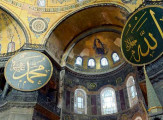


















Nice list! The trip from Aswan to Luxor (or vice versa) is a must, however there’s many other sights worth seeing:
Pyramids of Saqqara and Dashour – http://www.travelblog.org/Africa/Egypt/Lower-Egypt/Cairo/blog-243953.html
Hurghada (for a beach that’s not Sharm el Sheikh) – http://en.wikipedia.org/wiki/Hurghada
Alexandria. Egypt’s port city is beautiful and the fish is amazing! – http://alexandriaegypt.com/
Abu Simbel – http://wikitravel.org/en/Abu_Simbel
Mount Sinai and St Catherine (if security situation allows) – http://discoversinai.net/english/places-of-interest-egypt-sinai/st-catherine-and-mt-sinai/
Oh, and unless one plans on getting a guide to visit the Egyptian Museum it’s overrated and sometimes highly disappointing (due to the cataloguing system and lack of info). There’s plenty of other things to do in Cairo like Al Azhar, Islamic Cairo, Coptic Cairo, The Islamic Art Museum and several other lesser known museums and galleries.
Thank you for the great sources!